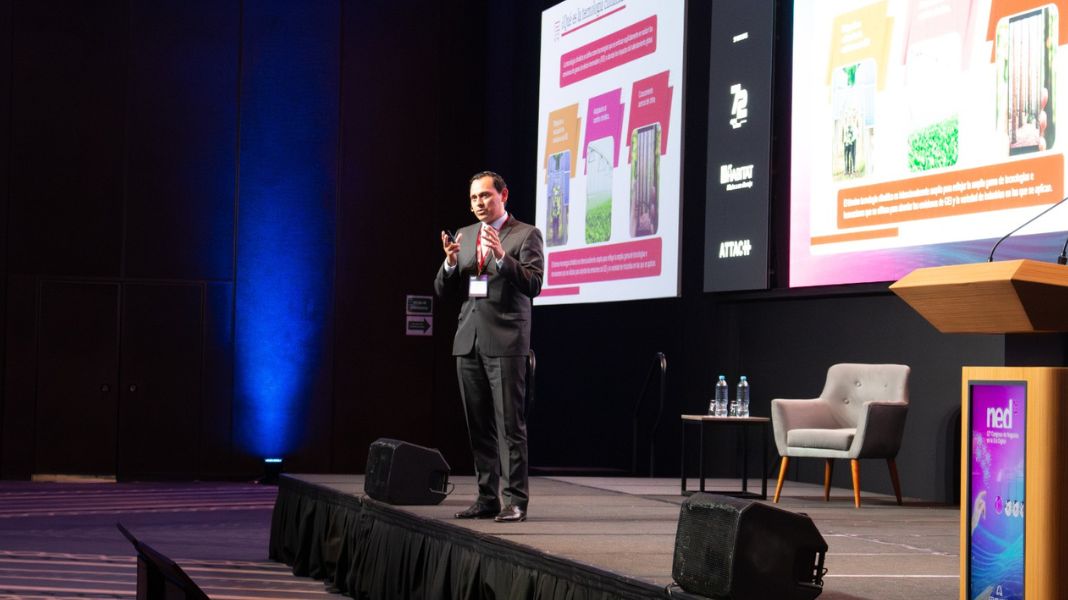- “Net Zero” action is high on the agendas of many companies.
- The climate technology finance gap is twice as wide in developing countries as in developed countries.
- In Peru, private investments stand out for the development of renewable electricity.
Climate technology is changing the way the world does business, but it also plays a key role in accelerating decarbonisation. Therefore, funding and investment in innovation should be greater than many countries, including Peru, currently receive, as climate technology focuses on reducing greenhouse gas (GHG) emissions or preparing companies to face the impacts of global warming, said José Luis Velazquez. , PwC is the lead sustainability and climate change partner in Peru.
Within the framework of the 12th Business Congress of the Digital Era – NED 2023, the expert commented on the current situation in Latin America and the world in the face of climate change, highlighting the role of climate technology. That’s because, according to the International Energy Agency, one-third of emissions reductions in 2050 will depend on technologies currently in development.
According to data from the Net Zero Economy Index 2023, there is an increase in the adoption of renewable energy; “Net Zero” action is high on the agendas of many companies and national policies are also being implemented to decarbonize. However, between now and 2050, more work needs to be done to achieve the ambitious decarbonisation rate of 17.2%, limiting global warming to 1.5ºC above pre-industrial levels. The pace of change is seven times faster than the global average (2.5%) reached in 2022 and 12 times faster than the 2000 average (1.4%).
The lead sustainability and climate change partner at PwC Peru highlighted some of the climate technologies with potential emissions reductions that could be developed in different countries, including Peru:
- When micromobility is used by millions of people, the emission reductions are huge.
- Green hydrogen is produced by electrolysis of water using renewable electricity.
- Precision agriculture is an agricultural management strategy based on observing, measuring and responding to temporal and spatial variability.
- Alternative foods, sources of protein other than meat.
- Standard heavy vehicles.
- Food Waste In the United States, the production of wasted food has generated as much as 43 million cars.
- Wind power.
- Technologies for sustainable production of iron and steel, as well as their recycling.
- Carbon capture, utilization and storage.
- solar power
- Electric vehicles with lightweight batteries.
“The climate technology financing gap is twice as large in developed countries. In the Peruvian case, private investments in renewable energies stand out. Four new power plants from renewable sources will enter commercial operation between 2023 and 2027,” said José Luis Velázquez.
Likewise, he commented on the San Gabon hydroelectric plant (Puno), the San Juan de Marcona wind farm (Ica), the Vaira extension wind farm (Ica) and the Clemis wind farm (Mokugua) with total investment. US $840 million and a total green energy capacity of 561.4 MW. The Punta Lomitas wind farm began commercial operation in June this year with a capacity of 296.4 MW at a global investment of USD 300 million.
Finally, the expert described some examples of sustainable innovations in LATAM for the fight against climate change, among which stand out: water planting and harvesting in the high Andean regions; Using technology in animal husbandry to reduce methane emissions; Energy production from methane through decomposition of household solid waste, among others. However, there is no better climate technology than natural capital, which includes forests, so protecting this natural capital is essential on the path to a less warm world.

